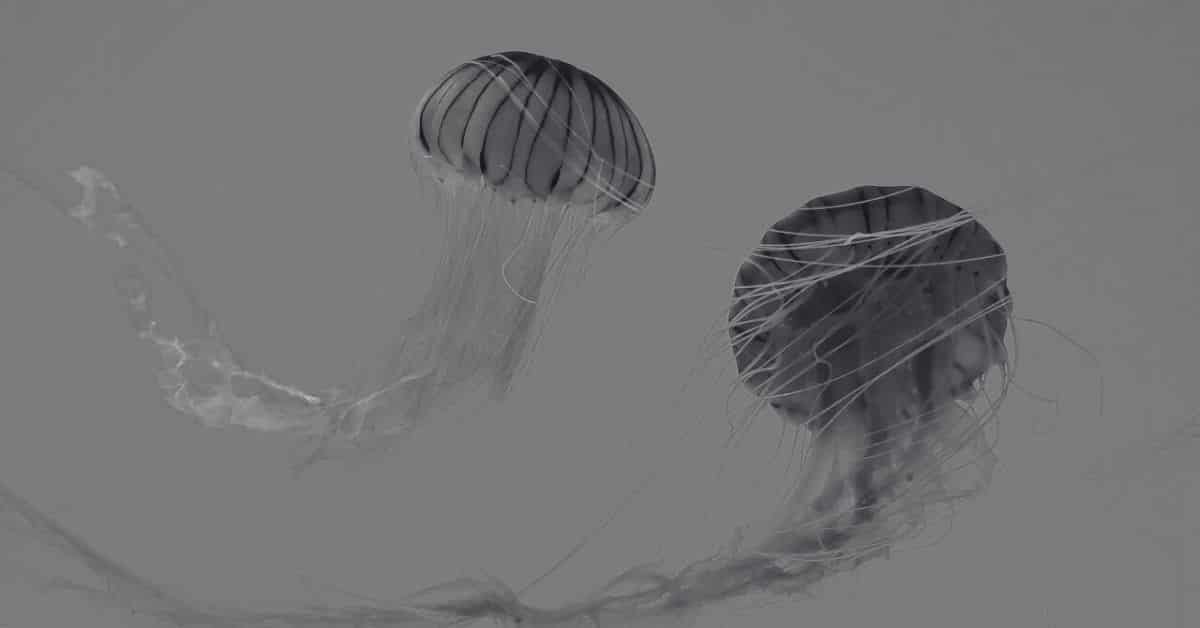Jellyfish fun facts, their anatomy, behavior & reproduction. Also, know that jellyfish are not fish, some of them are immortal & dangerous.
Jellyfish (let’s describe them as umbrella-shaped bells and flowing tentacles), the wobbly wonders of the ocean, often astound with their unique shapes, sizes, and stings.
Jellyfish🪼 have lived in Earth’s oceans for more than 500 million years, meaning these aquatic creatures were present before the first dinosaur appeared! Boom a cool fun fact. Get ready, because we’ve got many more!
Here are 10 more dynamic cool facts💯 about the most majestic creatures of the ocean – The Jellyfish ଳଳଳ:
Jellyfish do not have brains🧠, hearts🫀, bones🩻, or lungs🫁, instead, they have a nervous system with 10,000 neurons🧬 located throughout their body to identify light, and other changes happening surrounding them in the water.
50% of all the jellyfish🪼 species have the ability to glow in the dark (bioluminescent) waters just like neon signs at night!
The light produced by their bodies assists them in determining predators and attracting prey.
Jellyfish are not actually a fish! Instead they are a type of plankton and are related to sea anemones & corals which are referred to as jellies🪼 by some scientists.
The Lion’s Mane jellyfish (Cyanea capillataଳ) is the largest known jellyfish species in the world!
One such jellyfish discovered in 1870 had a diameter of 7 feet 6 inches and tentacles that stretched 121.4 feet, longer than a blue whale.
Jellyfish🪼 have already gone in SPACE!🌌 In 1991, NASA launched nearly 2,500 moon jelly polyps and ephyrae into orbit on the Space Shuttle Columbia🚀 to test the effects of gravity.
NASA has conducted multiple missions to study the effects of microgravity on jellyfish, including the Space Life Science-1 (SLS-1) mission🚀 in 1991 and the STS-65 mission.
These missions have helped scientists understand how jellyfish develop and sense gravity, and how they readjust to Earth’s gravity after being in space. Scientists found that space-born jellyfish had more difficulty swimming once they returned to Earth.
How cool is that!
A single jellyfish can reproduce all by itself! Adults release sperm & eggs in the water which join and grow into polyps.
By a process called ‘budding,’ the young jellyfish can then asexually clone themselves.
A species of jellyfish called (Turritopsis Dohrniiଳ) immortal jellyfish can turn back TIME!
When faced with any danger the immortal jellyfish absorbs its tentacles, falls to the sea floor, and reverses into a polyp. Eventually, this polyp turns into a new adult species.
The most venomous jellyfish of the ocean is the “Box jellyfishଳ”. Found near the Australia’s northern coast.
Box jellyfish are cnidarian invertebrates distinguished by their box-like body. Some species of box jellyfish produce potent venom delivered by contact with their tentacles.
One of the few jellyfish species with eyes👀, it hunts for its prey which are primarily smaller fish and shrimps. One sting can cause cardiac arrest or death in humans within minutes.
Shockingly, a jellyfish that is already dead can still sting you! Their tentacles are able to release venom even after death.

Leave a Reply